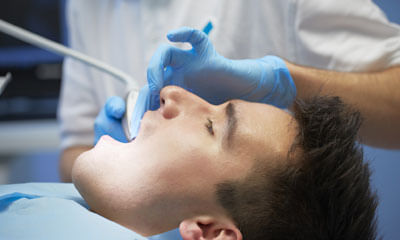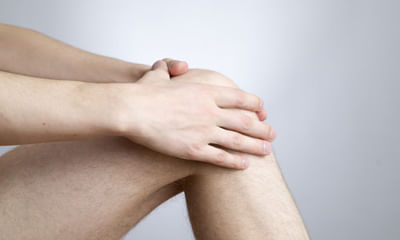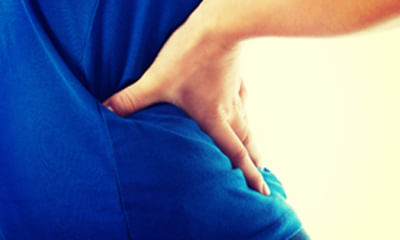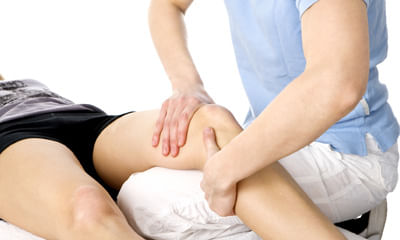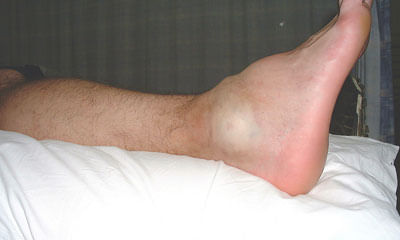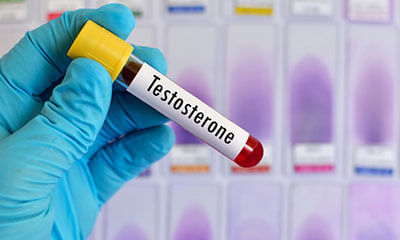Skin Colour Change Surgery
I have pain in lower back, butt, legs and feet. And also burning sensation in the legs and feet. And I am not able to wa ...
Ask Free Question
If you are suffering from burning pain or tingling sensation in hands or feet; sharp shooting pain in legs; numbness in hands or feet, then you might be suffering from neuropathic pain. What is a neuropathic pain? Neuropathic pain is a special type of pain which occurs when there is damage to nerve fibres, which produces tingling or burning type of pain. It is of two types: 1. Peripheral neuropathic pain: it occurs when there is an injury to peripheral nerve fibres (a-delta or c-fibers) which carries pain sensation to the brain (thalamus) for interpretation. 2. Central neuropathic pain: it occurs due to sensitization of central pain interpreting mechanisms (thalamus) to falsely feel pain when peripheral nerve fibres are no longer sending pain impulses to them. Worldwide-estimates of the prevalence of neuropathic pain is 7% i.e. 7 persons out of 100 people are suffering from different types of neuropathic pain. Symptoms: •tingling sensation or feeling of ants crawling under skin •burning sensation •sharp shooting pain or electric current-like sensation •stabbing pain •dull pain with numbness or heaviness reasons for neuropathic pain: •diabetes mellitus: most common cause worldwide due to uncontrolled blood sugar levels, causing damage to nerve fibres. •alcohol consumption/cigarette smoking: damage to nerve fibres or damage to blood vessels supplying nerve fibres. Burning pain in feet •neck pain/low back pain/glutei pain •vit. B12 deficiency •chemotherapy for cancer patients •post-herpes virus infection •post-spine surgery •post-amputation •diseases like spinal cord injury, multiple sclerosis, hiv, lead toxicity, etc. Special neuropathies: 1. Carpal tunnel syndrome: tingling, burning sensation in hand which occurs due to compression of median nerve in the wrist area. It occurs in women especially due to pregnancy, hypothyroidism, diabetes, etc. And in men due to improper position of the wrist during working on computers. 2. Cervical radiculopathy: pain in neck and shoulder region (which increases with neck movements), along with sharpshooting pain radiating from neck to hand occurs in cases of cervical radiculopathy. This is due to compression of the cervical nerve root by disc prolapse, facet subluxation, muscle spasm, trauma, etc. 3. Lumbar radiculopathy: pain in lower back or glutei region with sharp shooting pain radiating from hip to leg/foot region, occurs in cases of lumbar radiculopathy or sciatica. This is due to compression of lumbar nerve root or sciatic nerve by disc prolapse, facet joint, trauma, hypertrophied ligamentumflavum, piriformis syndrome, etc. 4. Meralgiaparesthetica: tingling or burning sensation in front of the thigh, occurs due to compression of lateral cutaneous nerve of thigh, near waist region. Usual causes are tight or constrictive clothing at waist region, prolonged sitting, protuberant abdomen, etc. Prevention of neuropathy: 1. Avoid alcohol consumption and cigarette smoking. 2. Maintain ideal body weight/bmi (body mass index) 3. Lifestyle changes: daily exercises (>30 minutes per day) or brisk walking or swimming; avoid prolonged sitting or standing (>30 minutes). 4. Food/diet should have following components: •green vegetables e.g. Spinach, fenugreek leaves (methi), radish, etc •coloured vegetables e.g. Tomato, carrot, capsicum (green/red), ladies-finger (bhindi) •milk products e.g. Milk, buttermilk, curd, cheese (paneer) •protein-rich foods e.g. Fish, egg, chicken, pulses (daal) •fibre-rich foods e.g. Bran, oats, brown-rice •fruits e.g. Apple, orange, guava, papaya, pomegranate, berries 5. Blood sugar control (in diabetics) 6. Care of feet: •regular inspection of feet (with mirror) •comfortable, well-fitted shoes •regular consultation with a podiatrist •treatment of wounds, foot deformities 7. Adequate sleep 8. Warm water bath (increases blood flow to the affected area) treatment: •consult pain medicine specialist. •neuropathic painkillers e.g. Amitriptyline, pregabalin, gabapentin, capsaicin, duloxetine, etc. •vit. B12 supplements, anti-oxidants, multi-vitamins. •transcutaneous electrical nerve stimulation (tens) •acupuncture •relaxation and yoga •neural prolotherapy.
Hi sir, I am 37 years old. 6 weeks ago, I accidentally applied "magnesium sulphate paste bp" inside of my lower lip. The ...
Ask Free Question
I understand your concern and fear regarding the burning sensation in your lip after applying magnesium sulphate paste and potential lip cancer. However, I am not a medical professional and cannot diagnose your condition or provide medical advice. It's crucial for you to seek further medical attention from qualified specialists to accurately assess your situation and determine the best course of treatment. Here are some specific recommendations I can make: 1. See a doctor with expertise in lip conditions: consider consulting a dermatologist specializing in oral mucosa or an oral and maxillofacial surgeon. They can perform a thorough examination, including potentially taking a biopsy of the affected area, to determine the cause of the burning sensation and color change. 2. Be transparent about your history: clearly communicate to your doctor the details of the magnesium sulphate paste incident, the burning sensation, color change, and any medications you have tried. This will help them diagnose the problem accurately. 3. Don't self-diagnose: while lip cancer is a possibility, it's important not to jump to conclusions. Many other conditions can cause burning sensations and color changes in the lips. A specialist can differentiate between these and provide appropriate treatment. 4. Avoid further irritants: while waiting for an appointment, avoid any activities or substances that might further irritate your lip, such as spicy foods, alcohol, harsh soaps, or aggressive rubbing. 5. Manage your anxiety: it's understandable to feel anxious about this situation. However, focusing on finding the right specialist and following their recommendations can help alleviate some of your worries. Remember, early diagnosis and treatment are crucial for any potential lip conditions. By seeking professional medical help, you can ensure you receive the proper care and address any underlying issues effectively. Here are some additional resources that may be helpful: the american academy of oral and maxillofacial surgery: url/ the american academy of dermatology: url/ the skin cancer foundation: url/ please take care and prioritize seeking professional medical help for your lip concern.
I'm 24 years male. I'm having pain in foot for around an year but have ignored but it was still there. It is kind of bur ...
Ask Free Question
Burning pain or tingling sensation in hands or feet if you are suffering from burning pain or tingling sensation in hands or feet; sharp shooting pain in legs; numbness in hands or feet, then you might be suffering from neuropathic pain what is a neuropathic pain? Neuropathic pain is a special type of pain which occurs when there is damage to nerve fibres, which produces tingling or burning type of pain. It is of two types: 1. Peripheral neuropathic pain: it occurs when there is an injury to peripheral nerve fibres (a-delta or c-fibers) which carries pain sensation to the brain (thalamus) for interpretation. 2. Central neuropathic pain: it occurs due to sensitization of central pain interpreting mechanisms (thalamus) to falsely feel pain when peripheral nerve fibres are no longer sending pain impulses to them. Worldwide-estimates of the prevalence of neuropathic pain is 7% i.e. 7 persons out of 100 people are suffering from different types of neuropathic pain. Symptoms: •tingling sensation or feeling of ants crawling under skin •burning sensation •sharp shooting pain or electric current-like sensation •stabbing pain •dull pain with numbness or heaviness reasons for neuropathic pain: •diabetes mellitus: most common cause worldwide due to uncontrolled blood sugar levels, causing damage to nerve fibres. •alcohol consumption/cigarette smoking: damage to nerve fibres or damage to blood vessels supplying nerve fibres. Burning pain in feet •neck pain/low back pain/glutei pain •vit. B12 deficiency •chemotherapy for cancer patients •post-herpes virus infection •post-spine surgery •post-amputation •diseases like spinal cord injury, multiple sclerosis, hiv, lead toxicity, etc. Special neuropathies: 1. Carpal tunnel syndrome: tingling, burning sensation in hand which occurs due to compression of median nerve in the wrist area. It occurs in women especially due to pregnancy, hypothyroidism, diabetes, etc. And in men due to improper position of the wrist during working on computers. 2. Cervical radiculopathy: pain in neck and shoulder region (which increases with neck movements), along with sharpshooting pain radiating from neck to hand occurs in cases of cervical radiculopathy. This is due to compression of the cervical nerve root by disc prolapse, facet subluxation, muscle spasm, trauma, etc. 3. Lumbar radiculopathy: pain in lower back or glutei region with sharp shooting pain radiating from hip to leg/foot region, occurs in cases of lumbar radiculopathy or sciatica. This is due to compression of lumbar nerve root or sciatic nerve by disc prolapse, facet joint, trauma, hypertrophied ligamentumflavum, piriformis syndrome, etc. 4. Meralgiaparesthetica: tingling or burning sensation in front of the thigh, occurs due to compression of lateral cutaneous nerve of thigh, near waist region. Usual causes are tight or constrictive clothing at waist region, prolonged sitting, protuberant abdomen, etc. Prevention of neuropathy: 1. Avoid alcohol consumption and cigarette smoking. 2. Maintain ideal body weight/bmi (body mass index) 3. Lifestyle changes: daily exercises (>30 minutes per day) or brisk walking or swimming; avoid prolonged sitting or standing (>30 minutes). 4. Food/diet should have following components: •green vegetables e.g. Spinach, fenugreek leaves (methi), radish, etc •coloured vegetables e.g. Tomato, carrot, capsicum (green/red), ladies-finger (bhindi) •milk products e.g. Milk, buttermilk, curd, cheese (paneer) •protein-rich foods e.g. Fish, egg, chicken, pulses (daal) •fibre-rich foods e.g. Bran, oats, brown-rice •fruits e.g. Apple, orange, guava, papaya, pomegranate, berries 5. Blood sugar control (in diabetics) 6. Care of feet: •regular inspection of feet (with mirror) •comfortable, well-fitted shoes •regular consultation with a podiatrist •treatment of wounds, foot deformities 7. Adequate sleep 8. Warm water bath (increases blood flow to the affected area) treatment: •consult pain medicine specialist. •neuropathic painkillers e.g. Amitriptyline, pregabalin, gabapentin, capsaicin, duloxetine, etc. •vit. B12 supplements, anti-oxidants, multi-vitamins. •transcutaneous electrical nerve stimulation (tens) •acupuncture •relaxation and yoga •neural prolotherapy.
I'm 24 years male. I'm having pain in foot for around an year but have ignored but it was still there. It is kind of bur ...
Ask Free Question
Burning pain or tingling sensation in hands or feet if you are suffering from burning pain or tingling sensation in hands or feet; sharp shooting pain in legs; numbness in hands or feet, then you might be suffering from neuropathic pain what is a neuropathic pain? Neuropathic pain is a special type of pain which occurs when there is damage to nerve fibres, which produces tingling or burning type of pain. It is of two types: 1. Peripheral neuropathic pain: it occurs when there is an injury to peripheral nerve fibres (a-delta or c-fibers) which carries pain sensation to the brain (thalamus) for interpretation. 2. Central neuropathic pain: it occurs due to sensitization of central pain interpreting mechanisms (thalamus) to falsely feel pain when peripheral nerve fibres are no longer sending pain impulses to them. Worldwide-estimates of the prevalence of neuropathic pain is 7% i.e. 7 persons out of 100 people are suffering from different types of neuropathic pain. Symptoms: •tingling sensation or feeling of ants crawling under skin •burning sensation •sharp shooting pain or electric current-like sensation •stabbing pain •dull pain with numbness or heaviness reasons for neuropathic pain: •diabetes mellitus: most common cause worldwide due to uncontrolled blood sugar levels, causing damage to nerve fibres. •alcohol consumption/cigarette smoking: damage to nerve fibres or damage to blood vessels supplying nerve fibres. Burning pain in feet •neck pain/low back pain/glutei pain •vit. B12 deficiency •chemotherapy for cancer patients •post-herpes virus infection •post-spine surgery •post-amputation •diseases like spinal cord injury, multiple sclerosis, hiv, lead toxicity, etc. Special neuropathies: 1. Carpal tunnel syndrome: tingling, burning sensation in hand which occurs due to compression of median nerve in the wrist area. It occurs in women especially due to pregnancy, hypothyroidism, diabetes, etc. And in men due to improper position of the wrist during working on computers. 2. Cervical radiculopathy: pain in neck and shoulder region (which increases with neck movements), along with sharpshooting pain radiating from neck to hand occurs in cases of cervical radiculopathy. This is due to compression of the cervical nerve root by disc prolapse, facet subluxation, muscle spasm, trauma, etc. 3. Lumbar radiculopathy: pain in lower back or glutei region with sharp shooting pain radiating from hip to leg/foot region, occurs in cases of lumbar radiculopathy or sciatica. This is due to compression of lumbar nerve root or sciatic nerve by disc prolapse, facet joint, trauma, hypertrophied ligamentumflavum, piriformis syndrome, etc. 4. Meralgiaparesthetica: tingling or burning sensation in front of the thigh, occurs due to compression of lateral cutaneous nerve of thigh, near waist region. Usual causes are tight or constrictive clothing at waist region, prolonged sitting, protuberant abdomen, etc. Prevention of neuropathy: 1. Avoid alcohol consumption and cigarette smoking. 2. Maintain ideal body weight/bmi (body mass index) 3. Lifestyle changes: daily exercises (>30 minutes per day) or brisk walking or swimming; avoid prolonged sitting or standing (>30 minutes). 4. Food/diet should have following components: •green vegetables e.g. Spinach, fenugreek leaves (methi), radish, etc •coloured vegetables e.g. Tomato, carrot, capsicum (green/red), ladies-finger (bhindi) •milk products e.g. Milk, buttermilk, curd, cheese (paneer) •protein-rich foods e.g. Fish, egg, chicken, pulses (daal) •fibre-rich foods e.g. Bran, oats, brown-rice •fruits e.g. Apple, orange, guava, papaya, pomegranate, berries 5. Blood sugar control (in diabetics) 6. Care of feet: •regular inspection of feet (with mirror) •comfortable, well-fitted shoes •regular consultation with a podiatrist •treatment of wounds, foot deformities 7. Adequate sleep 8. Warm water bath (increases blood flow to the affected area) treatment: •consult pain medicine specialist. •neuropathic painkillers e.g. Amitriptyline, pregabalin, gabapentin, capsaicin, duloxetine, etc. •vit. B12 supplements, anti-oxidants, multi-vitamins. •transcutaneous electrical nerve stimulation (tens) •acupuncture •relaxation and yoga •neural prolotherapy.
I underwent knee replacement surgery for both knees .one two months back and one one month back. Since 10 to 15 days I a ...
Ask Free Question
I am sorry to hear about your concern but will be happy to assist you. Hives can appear on any area of the body; they may change shape, move around, disappear and reappear over short periods of time. The bumps – red or skin-colored “wheals” with clear edges – usually appear suddenly and go away just as quickly. Let's connect over a call so that we can discuss your concern in details and make a treatment plan for you.
I have fissure and it is not going away. I had pain firstly for 1 week and then it reduced, now there is no pain but I h ...
Ask Free Question
Sit in comfortably hot water twice daily take isabgol two spoons at night apply cremagel ointment- if no relief after one month you will need surgery.
Since few years my areola is big in size and there is slight swelling but it becomes normal after touching or bathing, w ...
Ask Free Question
The areola is the darker area of skin that surrounds the nipple. As with the breasts and other parts of the body, the areolas come in many different shapes, sizes, and colors. It is normal for areolas to change in size and color over time. However, areolas that are larger than this are still perfectly normal. It is also normal for a person to have areolas that change in size and color over their lifetime. Breast changes are often due to shifting hormone levels in the body, such as those that take place during puberty, menstruation, pregnancy, and breastfeeding. A person’s breasts typically undergo several changes throughout each menstrual cycle. The ovaries release estrogen in the early part of the cycle when the egg follicle is maturing and preparing for ovulation. Estrogen stimulates the milk ducts in the breasts to grow and develop. A person can have an areola reduction as standalone surgery or as part of another breast procedure, such as a breast reduction or implant placement. Surgical areola reduction can decrease sensation in the nipples and may affect a person’s ability to breastfeed. The areolas come in many different shapes, sizes, and colors. Everyone’s breasts are different, and it is perfectly normal for a person to have very large areolas. It is also normal for the areolas to change in size and color over time. These changes can occur as a natural part of aging as well as during pregnancy and breastfeeding. Anyone who has concerns about the size of their areolas should speak to their doctor.
I am a 20 year old female. This last june, the homeopathic remedies that helped me with my psychosis for the previous 2 ...
Ask Free Question
lybrate-user you are really having a tough time with so many problems. All the physical problems that you are facing like headache (migraine), vomiting, nausea, even hallucinations are due to the side effects of the antidepressants that you are taking. If you are taking the medicines as prescribed or not, is not known and they have stopped affecting you. Suicidal thoughts during periods is due to pms (pre menstrual syndrome). Your eating habits are also very disturbed. There is only one solution for all your problems, you urgently should go for counseling. Don't waste more time. The counselor will go deeper into your problems and will guide you to cope up with them in a positive. Medicines will only give you side effects, counseling will guide you through your problems so that you can lead a normal life. Go for counseling without wasting any time. You need to change your lifestyle totally. Think about your parents, how worried they would be.
Is stretch marks on the body due to weight loss curable without any therapy and surgery. ...
Ask Free Question
Stretch marks typically appear as bands of parallel lines on your skin. These lines are a different color and texture than your normal skin, and they range from purple to bright pink to light gray. When you touch stretch marks with your fingers, you might feel a slight ridge or indentation on your skin these lines commonly appear during or after pregnancy or after a sudden change in your weight if it is due to a serious illness, then you may need to have blood, urine, or imaging tests.
Hi, my self pooja. I am 25 years old girl. My skin color completion is so dark from my birth I want to change my skin co ...
Ask Free Question
Most dark skinned people desire to achieve a lighter skin tone, thus they use a lot of money to invest on skin care products or to doctors. Skin lightening surgery is a cosmetic treatment that usually involves restructuring of some skin tissues to lighten the skin and provide a more even skin tone. This process is done by reducing the production and concentration of melanin in the body. Skin lightening surgery uses a variety of methods and peeling has been considered to be the most common. Recovery time after the skin lightening surgery is usually between 14 and 21 days. During this recovery time, you may feel like you have sun burn. Redness, swelling and bruising are just some of the side effects. Redness may also be seen after three weeks but this easily be camouflaged by make up until it finally fades after three months.


